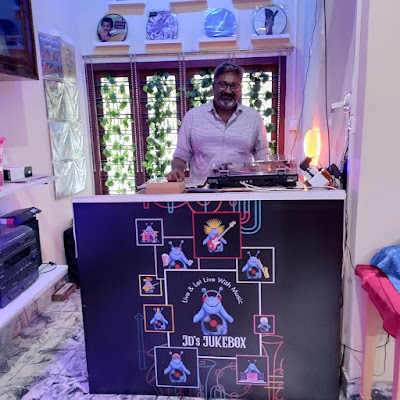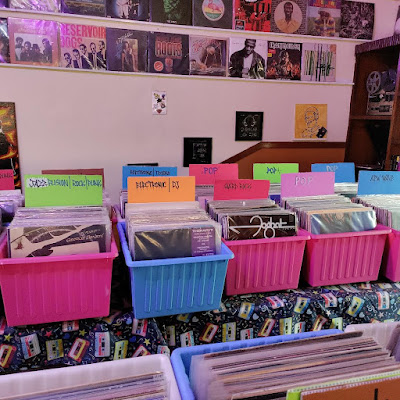Captions: The book cover; author Anand Neelakantan; author Valmiki
One of India’s epic poems decoded
By Shevlin Sebastian
In the foreword of ‘Many Ramayanas, Many Lessons’, author Anand Neelakantan states the impact of the Ramayanas on South-East Asia has been the most profound. No other text has come close in the past 3000 years. And majorly in rural India, the Ramayana remains ‘a holy book for spiritual practice, a guide for value education, as well as an ever-popular source of entertainment.’
Anand also offers a disclaimer. He said this was not a research book, ‘but a mere collection of thoughts, tales and lores of a humble writer.’
One conclusion Anand said the reader might come to after reading the epic was that life is a mixture of chance and karma.
The book begins with how the thief Ratnakara meets Sage Narada and plans to rob his veena. Saga Narada gets into a conversation with Ratnakara and asks him whether what he is doing is right.
Thereafter, they meet the family of Ratnakara, who say they don’t support his way of earning a living. A shocked Ratnakara goes into a meditative silence, murmuring Rama Rama, as instructed by Sage Narada, by the banks of the River Tamasa, the river of darkness.
Years later, he is changed and becomes a saint. Sage Narada named him Valmiki and asked him to spread the knowledge he had gained.
When asked how, Saga Narada said, ‘Write about Rama.’ And then he vanishes.
And Valmiki is tormented by what and how he should write.
One day inside the forest, he sees two birds making love. But in the moment of ecstasy, the hunter kills the male bird with an arrow. Valmiki felt anguish. And the first lines of the epic poem bursts out of him:
‘Maa nishada pratisthana tvamagamahsavati samaa yat kraunchamithaunamdekam vadhi kamamohitam’ (Don’t brute! You will never have peace, for you have killed one of the two birds while they were in the act of love).
Anand said that there were three major versions of the Valmiki Ramayana. There is one which is popular in South India, another in East India, while the third is the North-Western version.
After each story, Anand offers insightful commentary on the tale’s meanings, quoting the Ramayana’s sages and saints.
Here is the opinion on love put forth by Rishyasringa, a hermit living in a jungle in the Himalayas. ‘Love is the greatest spirituality,’ he said. ‘In fact, spirituality is nothing but finding love. One can love another person, or the whole world or God. One of the four great aims of life, according to the Hindu scriptures, is kama, or passion. Without passion, there is no salvation.’
Once Sage Vishwamitra asked King Dasaratha if Rama could come to his forest hermitage and protect it from Rakshasas. Dasaratha said no. He added that Rama was too young.
Vishwamitra said, ‘Dasaratha, once the children grow up, parents must set them free. They have to chart their own destiny.’
Added Anand: ‘Dasaratha’s behaviour is thus typical of most fathers. The only thing that has changed from the times of the Ramayana is that open discrimination against girls has somewhat reduced.’
There are profound truths sprinkled in many parts of the narrative.
Here is King Janaka of Mithila telling a yogi who visited his kingdom: ‘Who isn’t going to die? Life is a game from which no one comes out alive, yet we all live as if we will live for eternity. The difference between you and me is that I know this truth. I can die at any moment. There is no guarantee of the future, yet I act by living completely in the moment. I do not worry about my past; I don’t think about the future. I choose to live and act in the moment without worrying about the consequences…. I want you to reflect on the fact that why the next day, one can die at the next moment. Yet a wise man will live the moment. The only truth is now. The past is fiction, the future a dream. The truth is now.’
In January 2025, Oprah Winfrey selected the book, ‘The Power of Now’, the multi-million copy bestseller by German spiritual teacher Eckhart Tolle, on the 20th anniversary of its publication, for her book club. This was the second time she did so because the book had changed her life.
‘The Power of Now’ says the same thing King Janaka has said. This proves the most profound wisdom is found in the Ramayana. It provides answers to all the moral dilemmas we face.
Once somebody asked Mahatma Gandhi, ‘Who is your Rama? What proof do you have that Rama lived and ruled over Ayodhya?’
Gandhi replied, ‘Rama is the name of the light inside my consciousness. It is what is lighting my mind. It can be called Allah, it can be called Jesus, it can be called Shunya, it can be called anything. Names don’t matter.’
Expectedly, Anand tackles the concept of Maya (illusion). He writes, ‘What you are seeing as stars may not exist at all because they are many light years away and the light reaching you now started millions of years ago. The star may have died, but you see it, so for you, it exists. Is that not an illusion, maya? You see what does not exist, what has already died.’
As a surprise, the folk version of the Ramayana deals with transgenders, too.
When Rama was about to go into exile with Sita and Lakshmana, he turned to the people waiting on the banks of the Sarayu River and said, ‘Men and women of Ayodhya, please go back. I will return after 14 years.’
When Rama returns, he sees the transgenders living on the bank, outside the city. When he asked them why, they said, ‘You said, “men and women”, but you, whom we consider our God, failed to mention us. We are perhaps the unfortunate people whom even God forgets.’
An apologetic Rama said, ‘You will always have a special place in my heart and society. Your blessing will be equal to my blessing.’
That is how transgenders come to bless a newborn child or, on other important occasions. There is a widespread belief that the blessing of transgenders is the blessing of Ram himself.
As Anand writes, ‘This is how folk tradition has woven marginalised people into the social fabric, compelling those who would otherwise have shunned them to show them respect.’
The tale of the Ramayana continues with its well-known twists and turns, like Ravana’s abduction of Sita, the bird Jatayu attacking Ravana to save Sita, and the story of Hanuman’s trip to Lanka. Then Lord Rama comes to Lanka, kills Ravana and rescues Sita.
Best-selling author Anand’s writing is simple, straight-forward and accessible. This is a book that reminds us of universal truths that have been there since the dawn of civilisation.
(A shorter version was published in The Sunday Magazine, The New Indian Express, South India and New Delhi)





